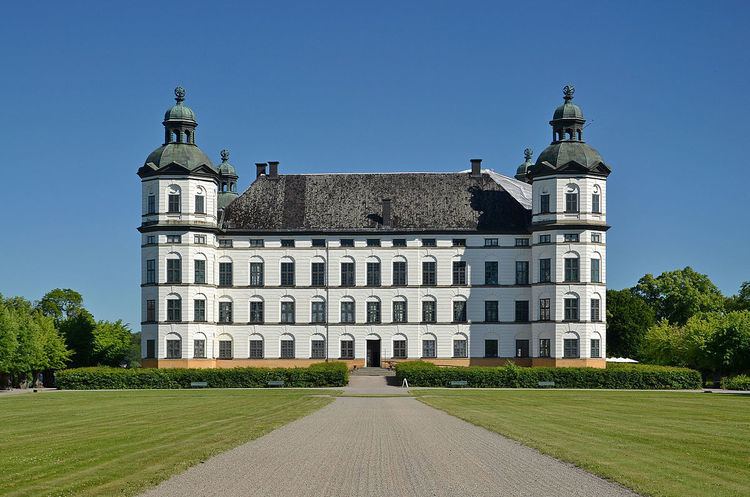Architectural style Baroque | Country Sweden Phone +46 8 402 30 60 Architect Caspar Vogel | |
 | ||
Artwork Vertumnus, Winter Landscape Similar Livrustkammaren, Hallwyl Museum, Drottningholm Palace, Gustavianum, Gripsholm Castle Profiles | ||
An introduction to skokloster castle
Skokloster Castle is a Swedish Baroque castle built between 1654 and 1676 by Carl Gustaf Wrangel, located on a peninsula of Lake Mälaren between Stockholm and Uppsala. It became a state museum in the 1970s and displays collections of paintings, furniture, textiles and tableware as well as books and weapons.
Contents
- An introduction to skokloster castle
- Waldemar januszczak visits skokloster castle
- History
- Museum collections
- References
Waldemar januszczak visits skokloster castle
History
The castle was built in the Baroque style between 1654 and 1676 by the wealthy military commander count Carl Gustaf Wrangel on a peninsula of Lake Mälaren between Stockholm and Uppsala. It was designed mainly by architect Caspar Vogel, and other architects involved were Jean de la Vallée and Nicodemus Tessin the Elder.
The castle is a monument to the Swedish Age of Greatness, a period in the middle of the 17th century when Sweden expanded to become one of the major powers in Europe. The death of Wrangel in 1676 meant that the castle was never truly completed. The Brahe family who inherited the castle after Wrangel's death, had their own family castles and did not complete the interiors. Thus a large banqueting hall remains largely in the same condition as the builders left it in the summer of 1676. It is now called the Unfinished Hall. Skokloster Castle is the only building in Europe with a complete 17th-century building site of equal authenticity. Alongside the Unfinished Hall there are a number of other related items from the same period, as several hundred tools and about a dozen books on construction.
In 1967, the Brahe family sold the castle and its contents to the Swedish government; Skokloster Castle became a state museum and government agency named the Royal Armoury and Skokloster Castle with the Hallwyl Museum Foundation (LSH). the family still resides in the vicinity. In the 1970s, architect Ove Hidemark renovated the castle by using the same materials and building techniques as in the 17th century, constituting a benchmark in Swedish conservation techniques.
The interiors of the castle are thought to be especially well preserved, considering that it is without modern heating in a cold climate. A thorough renovation of the roof was undertaken with a second stage of the renovation commencing in March 2015, as the roof had leaked resulting in mould and damage especially to the paintings.
Museum collections
The finished parts of the castle display the full, sumptuous splendour of the Baroque. Its detailed chambers are home to collections of paintings, furniture, textiles and silver and glass tableware. One of the most famous paintings is the 16th century Vertumnus by Italian master Giuseppe Arcimboldo, depicting the face of Holy Roman emperor Rudolf II as the Roman god of the seasons using fruits and vegetables. The painting was taken as war booty in Prague in the 17th century.}
The castle armoury and library are noteworthy, both founded on Wrangel's collections of weapons and books and enriched and enlarged by other 17th- and 18th-century aristocratic bequests, such as those by Carl Gustaf Bielke.}
The armoury contains the largest collection of personal 17th century military weapons in the world. Mostly muskets and pistols, but also swords - including Japanese samurai swords - small cannons, pikes and crossbows. The weapons collection also includes various exotic items such as a 16th-century Eskimo canoe and snake skins. The original scale model of the castle, which the architect Caspar Vogel had made to demonstrate his plan to Count Wrangel, is also there.
